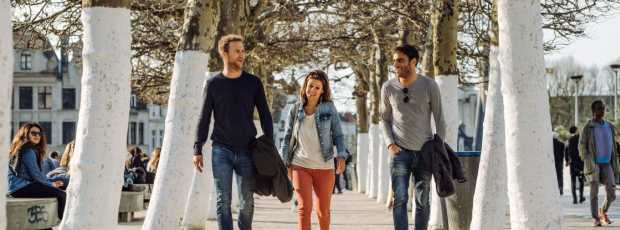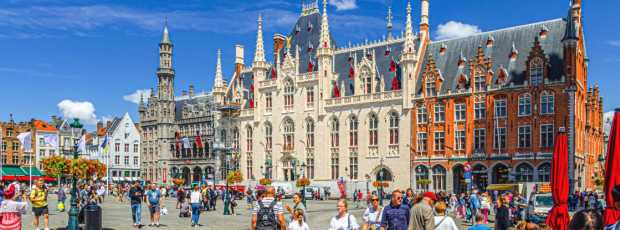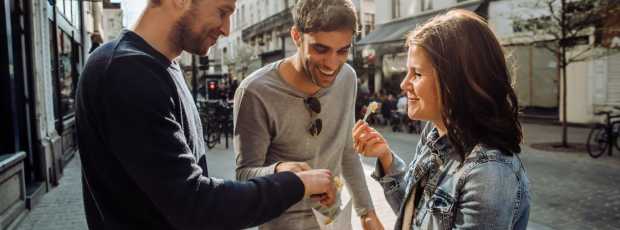Table Of Contents
- What Nobody Tells You About Brussels in Summer
- Where Can You Experience Real Brussels Culture?
- How Do You Navigate Brussels Like a Local?
- What's the Deal with Brussels' Festival Scene?
- Where Should You Go Beyond the Tourist Trail?
- How Much Will Brussels Actually Cost You?
- What Makes Brussels Different from Other European Capitals?
- When Is the Best Time to Experience Brussels?
- Why Does Brussels Keep Surprising People?
- What Should You Know Before Your First Visit?
I've lived in Brussels my entire life, and I'm still figuring this city out. When people ask me about visiting Brussels, I always wonder which version they'll encounter, the bureaucratic capital drowning in European Union meetings, the medieval charmer with cobblestone streets that'll twist your ankle, or the summer festival playground that transforms faster than you can say "Belgian beer."
The truth is, Brussels is all of these things at once, which is precisely why it surprises everyone, including those of us who call it home. After three decades here, I've watched countless first-time visitors arrive expecting either a boring political hub or a postcard-perfect tourist trap, only to discover something far more nuanced and genuinely interesting.
What Nobody Tells You About Brussels in Summer
Summer in Brussels is when the city finally makes sense. The rain stops pelting long enough for outdoor terraces to unfold, and suddenly this compact capital transforms into something resembling Mediterranean café culture. If Mediterranean cities served Belgian beers instead of sangria.
The European quarter, usually a sterile maze of glass buildings and suited bureaucrats, becomes surprisingly pleasant when the European Parliament goes on summer recess. Fewer people means you can actually enjoy Grote Markt without being elbowed, and the parks scattered throughout the city become genuine refuges rather than just green spaces you hurry past.
But here's what catches visitors off guard: Brussels in summer hosts many festivals that have nothing to do with waffles or chocolate. The Brussels Jazz Weekend brings world-class musicians to multiple venues across the city center, while the Brussels Summer Festival and BEST FEST Brussels showcase everything from electronic music to indie rock. These aren't tourist traps, they're genuine events that locals attend.
Where Can You Experience Real Brussels Culture?
The mistake most people make is sticking to the obvious tourist circuit. Sure, Grand Place is absolutely beautiful, it's a UNESCO World Heritage site for good reason, and the medieval architecture of the town hall and guild houses is genuinely impressive. But spending your entire first visit photographing the Manneken Pis statue and buying overpriced chocolate at Galeries Royales Saint Hubert means missing what makes Brussels interesting.
Start in Sainte Catherine, a neighborhood that used to be the city's fish market and is now its most dynamic dining district. The restaurants here serve everything from traditional Belgian food to innovative fusion cuisine, and the trendy bars attract a mix of locals and expats who actually live here. This is where you'll find Belgian beer that goes beyond the exported brands, including those delicate fruit beers that pair surprisingly well with summer weather.
The European Commission might run this city's politics, but Sainte Catherine runs its social life. Walk through on a summer evening, and you'll see what I mean, terraces packed with people speaking French, Flemish, and a dozen other languages.
Looking for a private city experience in Brussels?
Explore the city with a local who plans a private day just for you; no groups, no scripts.
How Do You Navigate Brussels Like a Local?
Public transport in Brussels is more efficient than most visitors expect, though the metro stations can be confusing if you're not familiar with the bilingual signage. The city center is easily accessible from most neighborhoods, but honestly, Brussels is compact enough that walking between major attractions makes more sense than deciphering the transport system.
Here's something locals know that guidebooks don't mention: the best way to understand Brussels is to get lost in its contradictions. You'll find Art Nouveau masterpieces next to brutalist apartment blocks, historic cafés serving beer that's been brewed for centuries beside trendy bars experimenting with craft cocktails topped with whipped cream.
The architecture tells the story of a city that's been rebuilt, reimagined, and reinvented countless times. The middle ages gave us the Grand Place, the 19th century brought elegant galleries and the Royal Museums of Fine Arts, and the 20th century deposited the European institutions that now define much of the city's identity.
What's the Deal with Brussels' Festival Scene?
Summer festivals in Brussels aren't just tourist entertainment, they're how the city celebrates its multilingual, multicultural identity. The Brussels International Fantastic Film Festival draws cinema enthusiasts from across Europe, while the Zinneke Parade transforms the streets into a massive community celebration that reflects the city's diverse neighborhoods.
Then there's the Ommegang pageant, a historical reenactment that takes place in Grand Place and recalls the middle ages pageantry that once filled these cobblestone streets. It's theatrical, elaborate, and completely over-the-top in the best possible way.
The Belgian Beer Weekend, meanwhile, brings together breweries from across Belgium to celebrate the country's most famous export.
What strikes me about these festivals is how they balance Brussels' role as the capital of Belgium with its function as an international city. You'll hear Flemish and French, obviously, but also English, German, Italian, and languages I can't identify. This isn't just about visiting Belgium, it's about experiencing a genuinely cosmopolitan European capital.
Where Should You Go Beyond the Tourist Trail?
The Royal Museums house one of Europe's best fine arts collections, but most visitors rush through to check it off their list. Spend time here, especially in the Magritte Museum section, and you'll understand why surrealism feels so natural in a city that's simultaneously medieval and ultramodern.
Mont des Arts offers the best views of the city, but it's also where you'll find the Brussels flower carpet, a massive temporary artwork made from thousands of begonias, dahlias, grass, and bark that transform the historic square into something genuinely spectacular. The event happens every other summer, and it's worth planning your trip around if you're visiting during the right year.
Parc du Cinquantenaire, built for the fiftieth anniversary of Belgian independence, showcases the triumphal arch and museums. The surrounding area has some of the city's most beautiful parks, perfect for summer picnics and for escaping the crowds that congregate around the more famous attractions.
What if your day in Brussels was planned by someone who knows it — and you?
City Unscripted matches you with a local host who creates a private experience based on your interests, not a set route.
How Much Will Brussels Actually Cost You?
The Brussels Card can save money if you're planning to visit multiple museums, but honestly, many of the city's best experiences don't require any extra cost. Walking through the Art Nouveau districts, exploring the weekend markets, or spending an afternoon in one of the beautiful parks costs nothing beyond the price of an occasional beer.
Belgian beer prices vary dramatically depending on where you drink. Tourist areas near the Grand Place will charge premium prices for brands you can find in any department store. But neighborhood cafés, especially around Sainte Catherine and the areas where fewer tourists venture, serve exceptional local brews at reasonable prices.
The real cost of visiting Brussels is time. This isn't a city you can understand in a day or two. The European Parliament offers free tours, but understanding why Brussels became the de facto capital of Europe requires grasping the city's complex history as a crossroads between France, Germany, and the Netherlands.
What Makes Brussels Different from Other European Capitals?
Brussels doesn't try to be Paris or Amsterdam, and that's precisely what makes it interesting. The city center maintains its medieval character while hosting the institutions that shape modern Europe. You can walk from Grand Place, with its Gothic town hall and baroque guild houses, to the glass towers of the European quarter in fifteen minutes.
The food scene reflects this same complexity. Traditional Belgian food; think mussels, fries, and beer, coexist with innovative restaurants that draw on the city's international population. The chocolate shops that line the tourist routes are fine, but the real culinary discoveries happen in the neighborhoods where locals eat.
Street art appears on walls throughout the city, often commenting on the political tensions between Brussels' role as a national capital and its function as a European hub. The famous comic strip murals (Brussels is the birthplace of Tintin and the Smurfs), blend seamlessly with contemporary works that address everything from immigration to climate change.
When Is the Best Time to Experience Brussels?
Summer brings the festivals, outdoor terraces, and the longest days, but it also brings the crowds. Winter has its own charm, the Christmas markets, the cozy café culture, and the way the city's architecture looks particularly dramatic under gray skies.
But here's what I've learned from watching visitors throughout the year: Brussels reveals itself differently depending on when you arrive. Summer Brussels is social and outward-facing, with the music festivals like Brussels Jazz Weekend and Brussels Summer Festival creating a party atmosphere. Winter Brussels is more introspective, better for museums and long conversations over beer.
The city's many festivals aren't just summer events. The Brussels International Fantastic Film Festival happens in spring, while various cultural celebrations occur throughout the year. Even the famous little boy (that's Manneken Pis for those keeping track) gets dressed up for different occasions, reflecting the city's love of both tradition and gentle absurdity.
Tip
We match you with the right host, not just any guide.Want to experience the real Brussels with someone who lives there?
A fully private experience, planned and led by a local host who tailors the day to you
Why Does Brussels Keep Surprising People?
After all these years, I think Brussels surprises visitors because it refuses to be easily categorized. It's simultaneously the capital of Belgium and of Europe, a medieval city and a modern metropolis, a place where you can hear three languages in a single conversation and where the Jeanneke Pis statue (the female counterpart to the more famous boy peeing) sits tucked away in a quiet alley.
The European Commission employs thousands of people here, but the city's identity isn't defined by bureaucracy. Grote Markt remains the heart of Brussels, but the neighborhoods radiating out from it each have their own character. Place Poelaert, with its imposing Palace of Justice, offers panoramic views of the city, while the market squares and shopping streets maintain the rhythm of daily life.
Brussels North, the business district, feels like a different city entirely from the historic center, yet they're connected by metro lines and the shared experience of living in a place that's constantly reinventing itself. The triumphal arch at Parc du Cinquantenaire celebrates Belgian independence, but the park fills with people from across the world.
What Should You Know Before Your First Visit?
The most important thing about visiting Brussels is managing your expectations. This isn't a city that will overwhelm you with obvious beauty or knock you over with aggressive charm. Instead, it rewards attention and curiosity. The best experiences often happen in the spaces between the major attractions; in the cafés, the markets, the parks where locals actually spend their time.
Brussels experiences are about discovering a city that's comfortable with its contradictions. Manneken Pis is genuinely one of the world's most famous statues, but it's also smaller and more underwhelming than any photograph suggests. Grand Place is genuinely spectacular, but the surrounding streets offer equally impressive architecture without the crowds.
The things to do in Brussels in summer extend far beyond the typical tourist checklist. Yes, visit the Royal Museums and walk through the beautiful city center, but also spend time in the neighborhoods where people live and work. Try the beer, obviously, but also explore the cafe culture that makes Brussels experiences feel more like a small town than a national capital.
This is a city that reveals itself slowly, in layers, like the complex history that shaped it. Visit once, and you'll understand why I'm still discovering new things about Brussels after three decades of living here. It's not the most beautiful city in Europe, but it might be the most genuinely interesting, and that's something worth experiencing firsthand.
Ready to plan your perfect day in Brussels?
Start your experienceWhat if your day in Brussels was planned by someone who knows it — and you?
City Unscripted matches you with a local host who creates a private experience based on your interests, not a set route.
Want to experience the real Brussels with someone who lives there?
A fully private experience, planned and led by a local host who tailors the day to you











